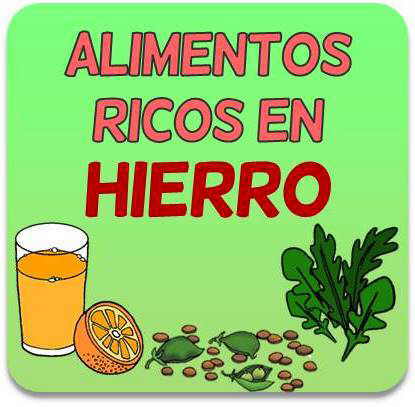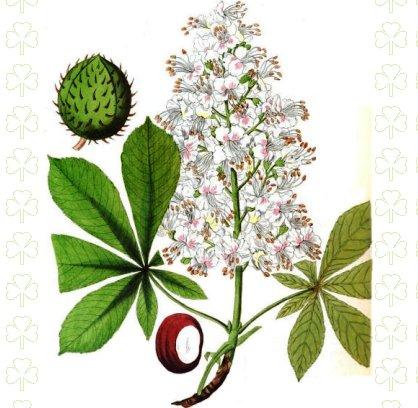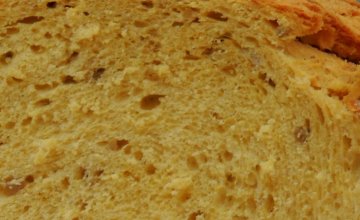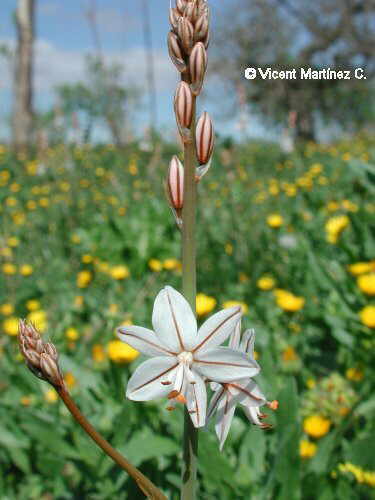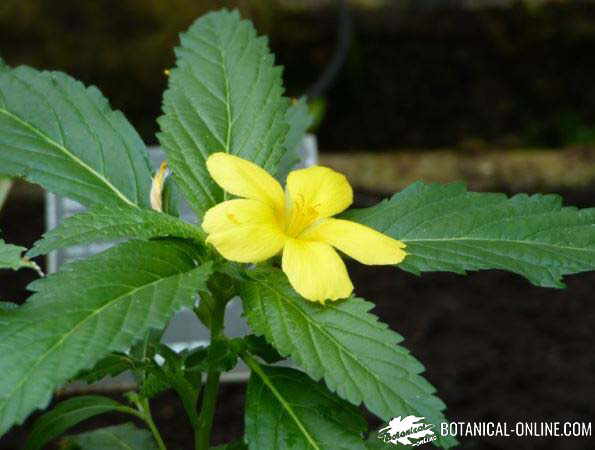Contenidos [mostrar]
Obras consultadas para el trabajo del detergente biodegradable
11. BIBLIOGRAFIA
– Abreu, A. & J. Carulla. 2003. Efecto del fruto, del pericarpio y del extracto semipurificado de saponinas de Sapindus saponaria L. sobre la fermentación rumial y la metanogénesis in vitro en un sistema rusitec. Revista Colombiana de Ciencias Pecuarias 16 (2): 147-154.
– Álvarez G., Medina G. y Sánchez G. (1999). Efecto del detergente biodegradable (Aquil sulfonato de sodio) en el consumo de oxígeno y tasa de filtración del bivalvo Semimytilus algosus. Rev. per. Biol. 6: 68-74.
– ALVAREZ DE LEÓN, Carmen Ileana. Archila Paíz, Ana Patricia. Caracterización física y química del fruto sapindus saponaria-jaboncillo- y su potencial de industrialización como fuente de saponinas. USAC, julio 1988.
– Aragón, C., B. Morales & A. Jiménez. Investigación y desarrollo de tres productos del jaboncillo (Sapindus Saponaria) como base para su industrialización. En: Revista Colombia Forestal Vol. -12 Diciembre 2009. Universidad Distrital Francisco José de Caldas. Bogotá. Págs. 59-89
– Argese E., Marcomini A., Miana P., Bettiol C. & Perin G. (1994). Submitocondrial particle response to linear alkylbenzene sulfonates, nonylphenol polyethoxilates and their biodegradation derivatives. Environ. Toxicol. Chem. 13: 737-742.
– Barry, A., and Brown, G. O. (1996). Anionic surfactant transport characteristics in unsatured soil. Soil Science. 161(7):415-425.
– Berna, J. L., Ferrer, J., Moreno, A., Prats, D., Ruiz Brevia, F. (1989). The fate os LAS in the environment. Tenside Surfactans Detergents. 23: 101-107.
– Brandt, K. K., Krogh, P. H., Sorensen, J. (2003). Activity and population dynamics of heterotrophic and ammonia-oxidizing microorganisms in soil surrounding sludge bands spiked with linear alkylbenzene sulfonate: a field study. Environmental toxicology and chemistry. 22:821-829.
– Calderón Felipe, Pavlova Margarita, 2004. Determinación de la Demanda Bioquímica de Oxígeno DBO5 método Respirométrico.
– CERÓN GARCIA M. C, SANCHEZ MIRON A, FERNANDEZ CEVILLA J.M, MOLINA GRIMA E & GARCIA CAMACHO F. Mixotrophic growth of the microalga Phaeodactylum tricornutum influence of different nitrogen and organic carbon source on productivity and biomass compositicion. En: Process Biochemistry. Vol.40, (2005); p. 297
– COGOLLO Kevin, BARRAZA Vladimir, GARY cristian (2008). Bondades del fruto del jaboncillo como un detergente biodegradable. p. 25-38; 50-65.
– Cook, A.M. (1998). Sulfonated surfactans and related compounds: facets of their sesulfonationby aerobic and anaerobic bacteria. Tenside Surfactants Detergents 35:52-56.
– Cserhàti, T., Forgàcs, E., Oros, G. (2002). Biological activity and environmental impact of anionic surfactans. Environmental Inetrnational. 28:337-348.
– CHISTY Yusuf. Biodiesel from microalgae. En: Biotechnology Advances. Vol. 25 (2007); p.294–304.
– DECRETO 1594 DE 1984.
– DECRETO 475 DE MARZO 10 DE 1998.
– Douglas A. Skoog, F. James Holler, Timothy A. Nieman. (1992). Principios de Analisis Intrumental. Quinta edición, Mc Graw Hill. 33.
– Effendy I, Maibach HI. (1995). Surfactants and experimental irritant contact dermatitis. Contact dermatitis 33: 217-225.
– Eichhorn P., Flavier M.E., Paje M.L. & Kneppe T.P. (2001). Occurrence and fate of linear and branched alkylbenzenesulfonate and their metabolites in surface waters in the Philippines. Sci. Total Environ. 269: 75-85.
– Jean-Louis SALAGER. (1992). EL MUNDO DE LOS SURFACTANTES, UNIVERSIDAD DE LOS ANDES FACULTAD DE INGENIERIAESCUELA DE INGENIERIA QUIMICA. Mérida-Venezuela. 22-26.
– Garcia, M.T., Campos, E., Dalmau, M., IIIàn, P., Sánchez-leal, J. (2006) Inhibition of biogás production by alkylbenzene sulfonates (LAS) in a screening test for anaerobic biodegradability. Biodegradation. 17:39-46.
– Gennaro, A.R. (2003). Remington. Farmacia. Tomo 1 20a edición 1534-1537.
– González-Mazo, E., Quiroga, J.M., Sales, D. and Gómez-Parra, A. (1997). Levels of linear alkylbenzenesulfonate (LAS) in waters and sediments of the coastal ecosystems of the Gulf of Cadiz. Toxicol. Environ. Chem., 59: 77–87.
– Haldar J, Kondaiah P, Bhattancharya S. (2005). Synthesis and antibacterial properties of novel hydrolyzable cationic amphiphilies. Incorporation of multiple head groups leads to improssive antibacterial activity J Med Chem 48: 3823-3831.
– Harold A. Wittcoff. Limusa noriega editores, (1978). Productos químicos orgánicos industriales. Tecnologías, formulaciones y usos. (Volumen II). 207-231.
– Heinze, J.E., and Brittonm L.N. (1993). Anaerobic degradation: Environmental relevance. Vista Chemical Company at the AOCS 3º World Conference and Exhibition on Detergent. Montreux, Suiza.
– Hrsak. (1996). Cometabolic trasformation of linear alkylbencenesulphonates by methabotrophs. Water Research. 30(12): 3092-9098.
– Instituto de Investigaciones Químicas y Ambientales de Barcelona (IIQAB-CSIC).
– Jensen J. (1999). Fate and effects of linear alkylbenzene sulphonate (LAS) in the terrestrial environment. Sci. Total Environ. 226: 93-111.
– José Iannacone y Lorena Alvariño. (2002). Ecología Aplicada, EFECTO DEL DETERGENTE DOMÉSTICO ALQUIL ARIL SULFONATO DE SODIO LINEAL (LAS) SOBRE LA MORTALIDAD DE TRES CARACOLES DULCEACUÍCOLAS EN EL PERÚ.
– Julio Abalde, Ángeles Cid, Pablo Hidalgo, Enrique Torres y Concepción Herrero, (1995). MICROALGAS: Cultivos y aplicaciones. Ed. Universidad de Coruña. 19-42.
– Kimerie, R.A. (1989). Aquatic and terrestial ecotoxicology of linear alkylbenzene sulfonate.Tenside Det. 26: 169-176.
– Kolodziejska J. (2005). Possibilities of application of non-ionic surfactants belonging of Rofam, Rokopol and Rokanol class in the prescription of dental anti- inflamatory gels. Polim Med. 35: 49-66.
– Kűchler, T., and Schnnak, W. (1997). Behavior of LAS in Sandy soils With low a mounts of organic matter. Chemosphere. 35:153-167.
– Laing, I. y Jones, E. (1983). Large-scale turbidostat culture of marine microalgae.Aquacul. Eng.2: 203-212.
– León, V. M., Sáez, M., González-Mazo. E. and Gómez-Parra, A. (2002). Occurrence and distribution of linear alkylbenzene sulfonates and sulfophenylcarboxylic acids in several Iberian littoral ecosystems. Sci. Tot. Environ. 288: 215–226.
– León, V.M. (2001). Reactividad y mecanismos de transporte de alquilbenceno lineal sulfonatos (LAS) y sus intermedios de degradación en sistemas marinos litorales. Tesis Doctoral. Universidad de Cádiz. 225.
– Lewis, M. A. (1986). Comparison of the effects of surfactants on freshwater phytoplankton communities in experimental enclosure and on algal population growth in the laboratory. Environ. Toxicol. Chem. 5: 319-332. Lewis, M. A. 1986. Comparison of the effects of surfactants on freshwater phytoplankton communities in experimental enclosure and on algal population growth in the laboratory. Environ. Toxicol. Chem. 5: 319-332.
– Lips, S.H. y Avissar, Y.J. (1986). Photosinthesis and ultraestructure in microalgae. Shelef, G. y Soeder, C.J. (eds.) 229-244. Elsevier/North Holland Biomedical Prees Amsterdam.
– Loehr, R.C. y Roth, J.C. (1968). Aerobic degradation of long-chain fatty acid salt. Journar WPCF, 40, 11, Part2, R385-R403.
– Luis Vargas, MSc, Maracaibo, (2004). Análisis de aguas y líquidos residuales.163-166.
– Maron and prutton. (1993). Fundamentos de Fisicoquímica, Limusa. 56-63.
– Manson. C. (1984). Biología de la contaminación del agua dulce. 522-535.
– Miguel Aguilar Ramo. (2001). Análisis de aguas – Determinación de sustancias activas al azul de metileno (SAAM), en aguas naturales, potables, residuales y residuales tratadas – método de prueba
– MINISTERIO DE LA PROTECCIÓN SOCIAL. Decreto 1575 del 9 de mayo de 2007.
– MORONTA R, MORA R y MORALES E. Respuesta de la microalga Chlorella Sorokiniana al pH, salinidad y temperatura en condiciones axénicas y no axénicas Universidad del Zulia. Maracaibo, Venezuela. En: CIEN. Vol.12, No.2.Art.3 (2004). Con acceso en: file://C:SciELOserialfagrov23n1bodyart_03.htm19/06/2006
– Novak, J. y Carlson, D. (1970). The Kinetics of anaerobic long chain fatty acid degradation. J.Wat.Pollut.Control Fed.42, 1932-1943.
– Novak, J. y Kraus, D. (1973). Degradation of long chain fatty acid by actived sludge. Wat.Res. 7, 843-851.
– Oilwatch. (2002). MANUALES DE MONITOREO AMBIENTAL COMUNITARIO. MANUAL 3. Indicadores físicos en ríos Indicadores físicos – químicos en aguas Indicadores en salud y actividad petrolera. 22-23.
– Pedro José Varó Galvañ, (1996). Contribución al estudio sobre el comportamiento ambiental y degradación de jabones. Tesis de doctorado. 8-21.
– Pérez L, Garcia MT, Ribosa I, Vinardell MP, Manresa MA, Infante MR. (2002). Biological properties of arginine-based gemini cationic surfactants. Environ Toxicol Chem 21: 1279-1285.
– Piasecki A. (2002). Biodegradable and Chemically degradable anionic surfactants. Encyclopedia of surface ans collord Science. Ed. A Hubbard. Marcel Dekker, New York, pp. 701-723.
– Porter MR. (1994). Handbook of surfactants. 2nd edition, Blackie Academic & profesional, London, 26-93.
– Powels, S.B. (1984). Photoinhibition of Photosynthesis induced. By visible lihg. Ann. Rev.Plant Physiol, 35: 15-44.
– Prescott, Haerley & Klein. Microbiology. Mc Graw-Hill. 5th edition.2002 ISBN: 0-07-282905-2. Description: ©2002 / Hardcover with CDROM. p. 114-126
– QUÍMICA AMBIENTAL: Contaminación del aire y del agua Año 1981
– RESOLUCIÓN 2115 DEL 22 DE JUNIO DE 2007.
– Romero R.J.A. (1996). Acuiquímica. Ed. Presencia. Santafé de Bogotá. Colombia.
– Resolución 1074 de 1997 Departamento Administrativo de Medio Ambiente
– Resolución1596 de 2001 Departamento Administrativo de Medio Ambiente.
– Rosen MJ (2004). Surfactants and interfacial Phenomena. 3rd edition, Wiley-Interscience, New York.
– Rosen, M. (1978).Surfactants and Interfacial Phenomena. John Wiley & Sons. New York. USA.
– Salager, JL (2002). Surfactants: types ans uses. Firp booklet · E300-A: Teaching aid in surfactant science & engineering. Laboratory of formulation, interfaces rheology and processes. Universidad de los Andes, Facultad de Ingeniera, Escuela de Ingeniera Química.
– Sánchez, J. & L. Silva. Estudio silvicultural de la especie Sapindus Saponaria L. (jaboncillo) como base para su aprovechamiento silvoindustrial En: Revista Colombia Forestal Vol. -11 Diciembre 2008. Universidad Distrital Francisco José de Caldas. Bogotá. Págs. 11-79
– Schöberl, P. (1989). Basic principles of LAS biodegradation. Tenside Surfactans Detergents. 26:86-94.
– Standard Methods for the Examination of Water and Wastewater. American Public Health Association, American Water Works Association, Water Pollution Control Federation. 19 ed., New York, 1995. pp 5-2 a 5-12.
– Stoker H.S. y Seager S.L. (1981) Química Ambiental: contaminación del aire y del agua. Ed. Blume.
– Swiser, R.D. (1987).Surfactant biodegradation. 2nd.Ed. Marcel Dekker, Inc. New York.
– Temara A., Carr G., Webb S., Versteeg D. & Feijtel T. (2001). Marine risk assessment: linear alkylbenzenesulponates (LAS) in the North Sea. Mar. Pollut. Bull. 42: 635-642
– Villa J. J. (1997). Tecnología farmacéutica. Vol. II: Formas farmacéuticas. 325-345.
– Vyas SP , Sing RP, Jain S, Mishra V, Mahor S, Singh P, Gupta NP, Rawat A, Dubey P. (2005). Nom- ionic surfactant based vesicles (niosomes) for non-invasibe topical genetic immnunization against hepatitis B. Int J Pharm. 296: 80-86.
– Wolfgang. L. (1981). LA QUÍMICA Y LA PROTECCIÓN DEL MEDIO AMBIENTE. 456-458.
– Yadav, J.S., Lawrence, D. L., Nuck, B.A., Federle, T.W., Reddy, C.A. (2001). Biotrasformation of lienar alkylbenzene sulfonate (LAS) by Phanerochaete chrysosporium: oxidationof añkylside-chain. Biodegradation. 12:443-53.
– Ying G.G., Williams B. & Kookana R. (2002). Environmental fate of alkylphenol ethoxylates- a review. Environ. Int. 28: 215-226.
– Zografy G, Schott H, Swarbrick J (1993). Interfacial phenomena. Ed. AR Gennaro. Remington’s pharmaceutical sciences. Easton Mack. P. 257-272.
11.1. BIBLIOGRAFIA ELECTRONICA
– http://www.radiogranada.es/modules…
– http://www.monografias.com/trabajos10…
– http://discoverthesecrets.blogspot.com/2008/04/composicion-de-los-detergentes.html
– http://herbaria.plants.ox.ac.uk/adc/downloads/capitulos_especies_y_anexos/sapindus_saponaria.pdf
– http://www.arbolesornamentales.es/…
– http://chilecontaminada.blogspot.com/2009/11/la…
– http://www.marketingnews.es/internacional/noticia…
– http://euroalert.net/news.aspx?idn=10953
![]() Más información sobre detergente biodegradable .
Más información sobre detergente biodegradable .
19 marzo, 2019



